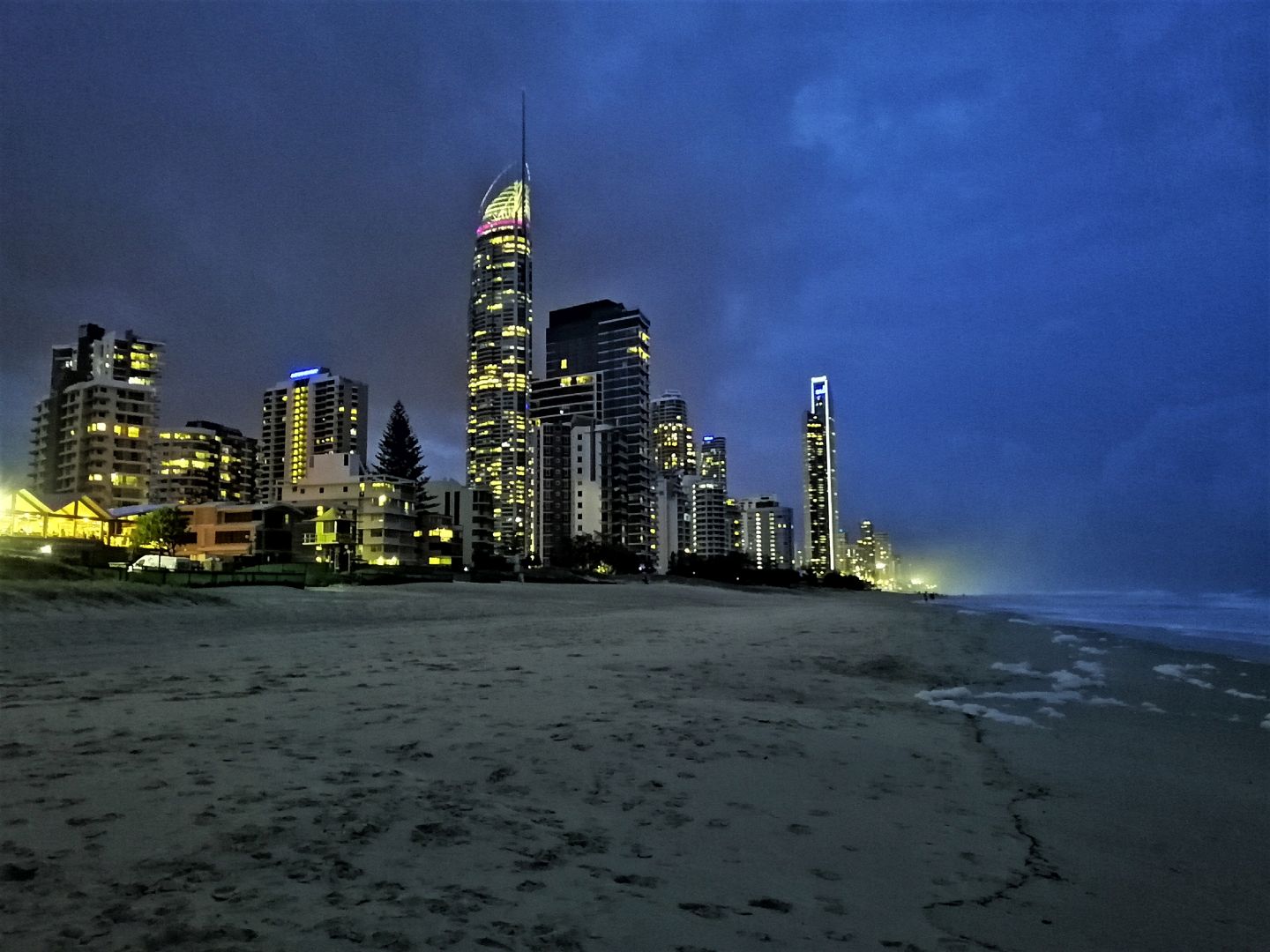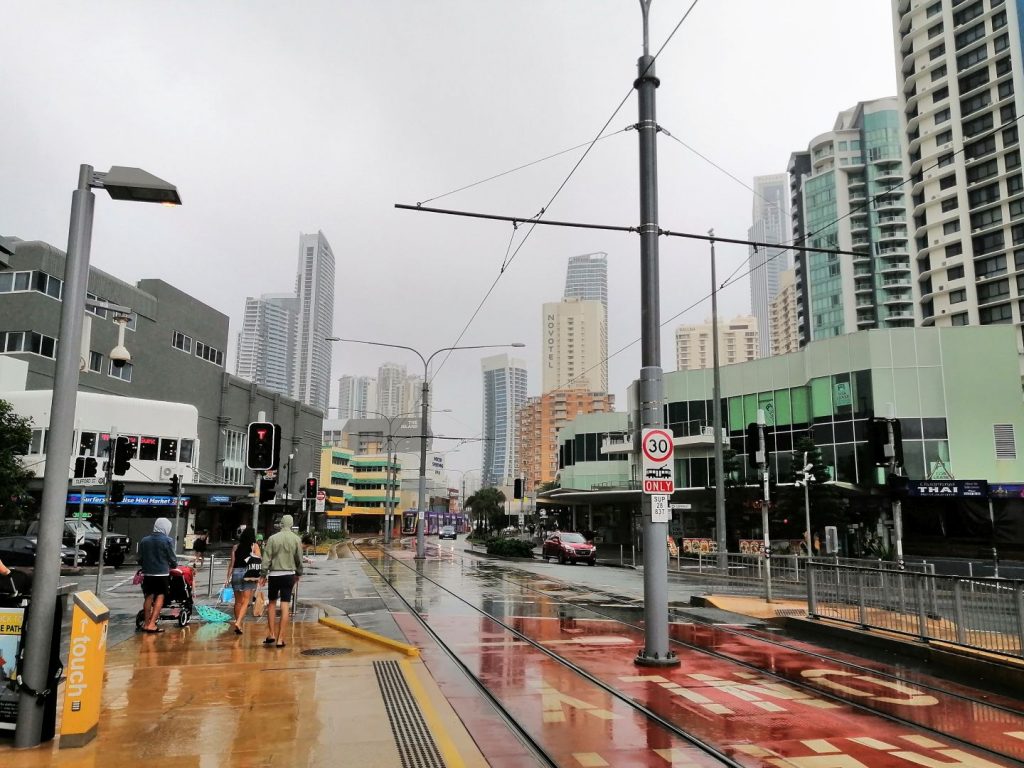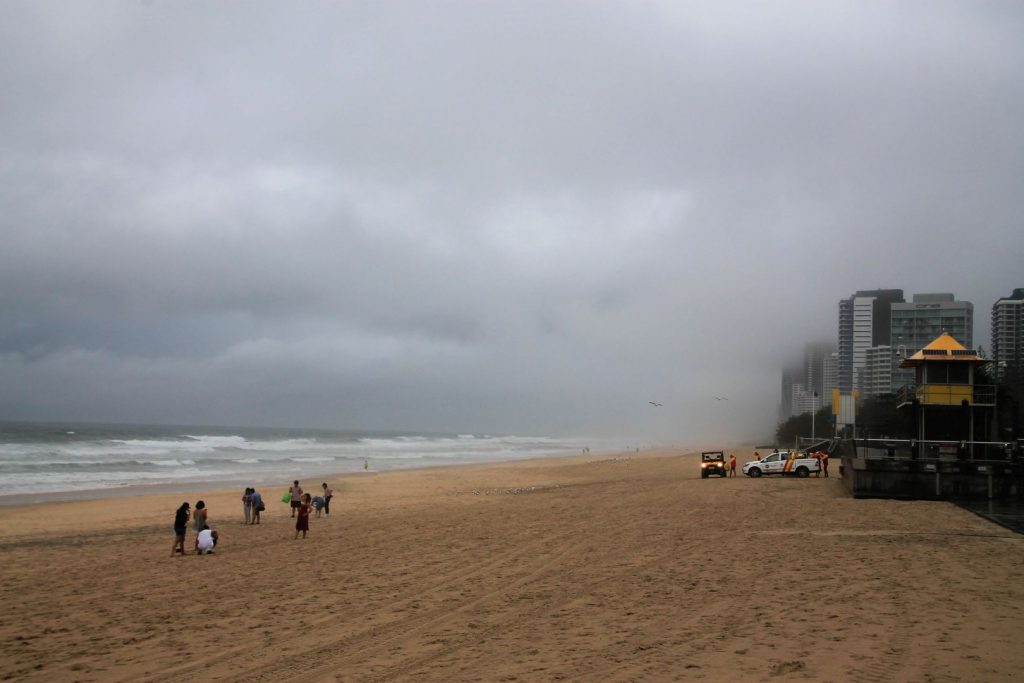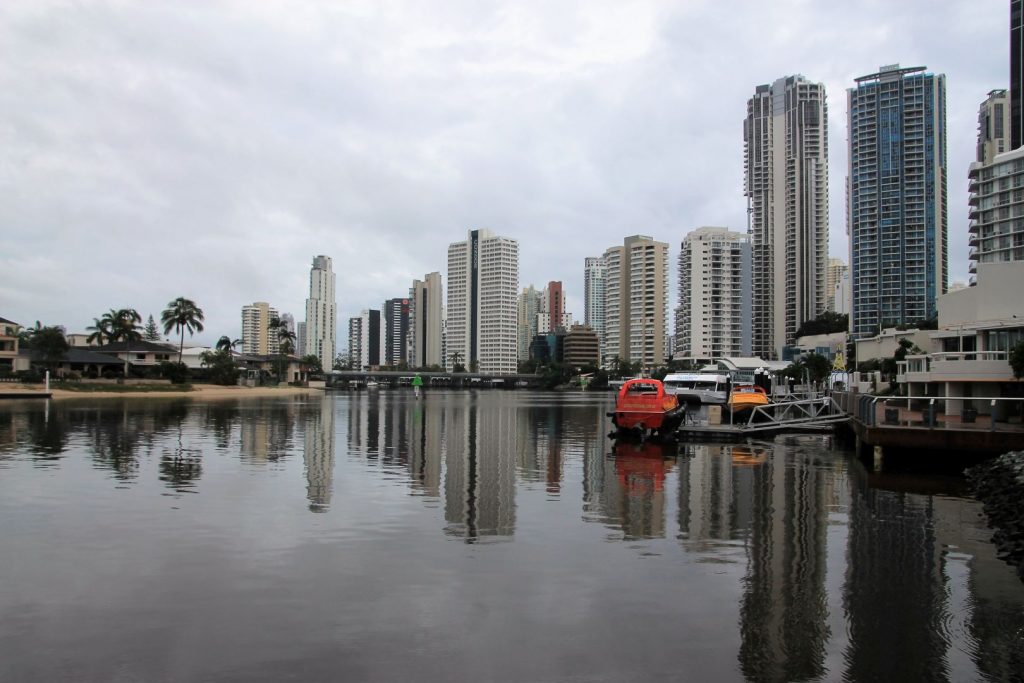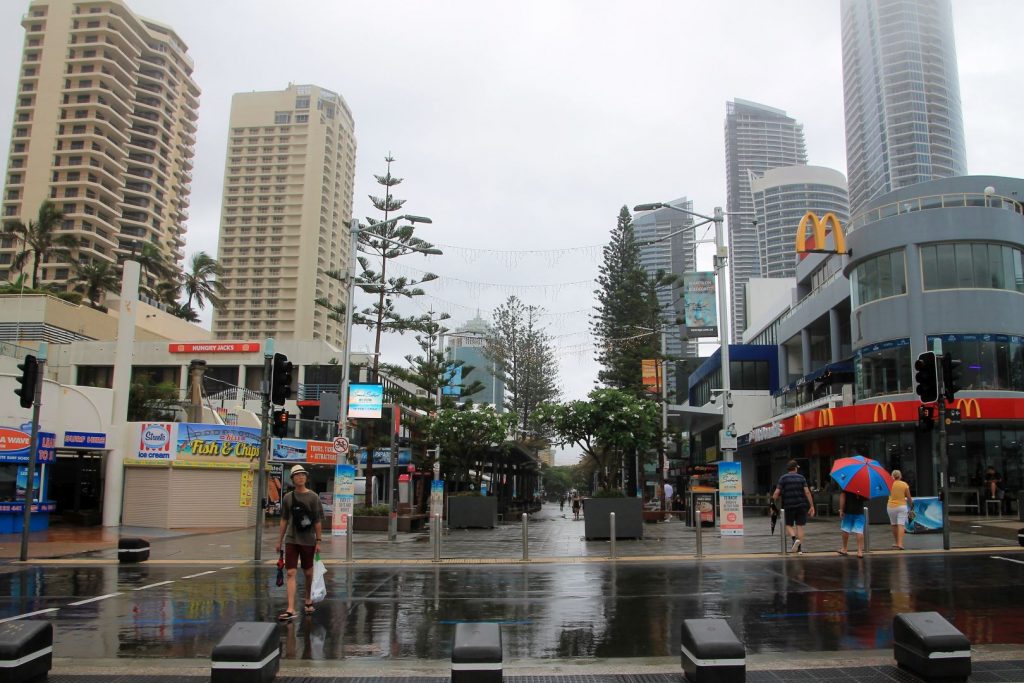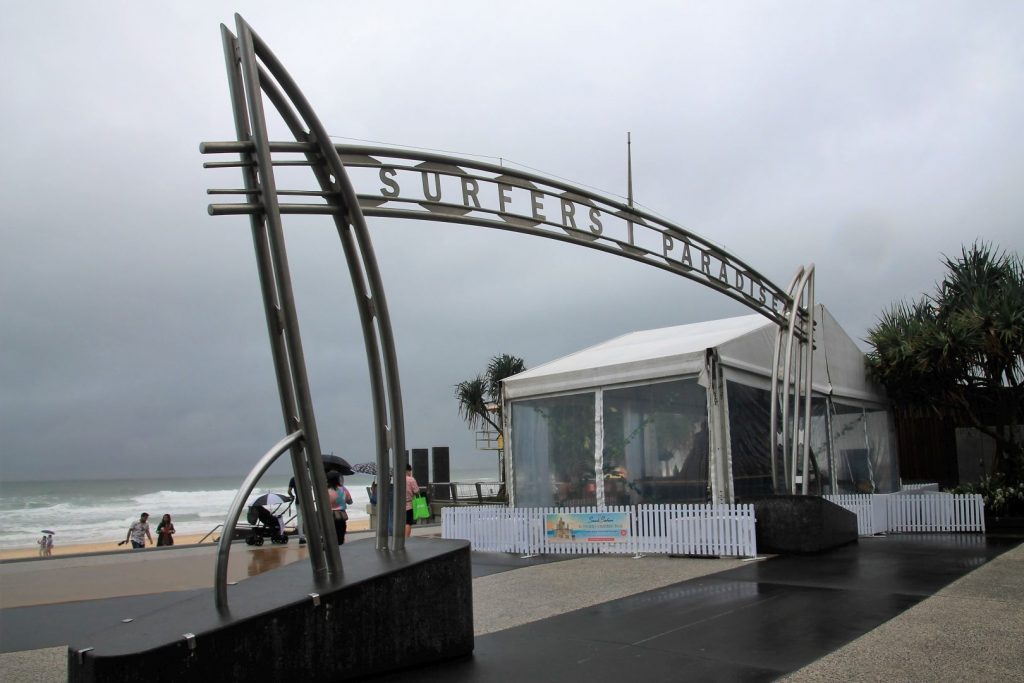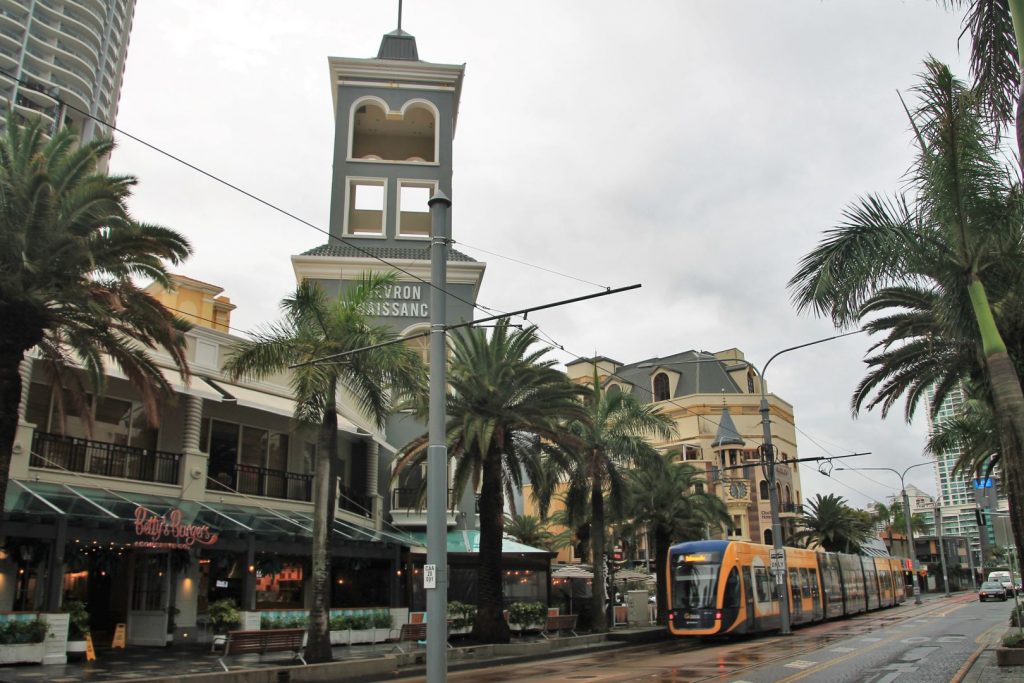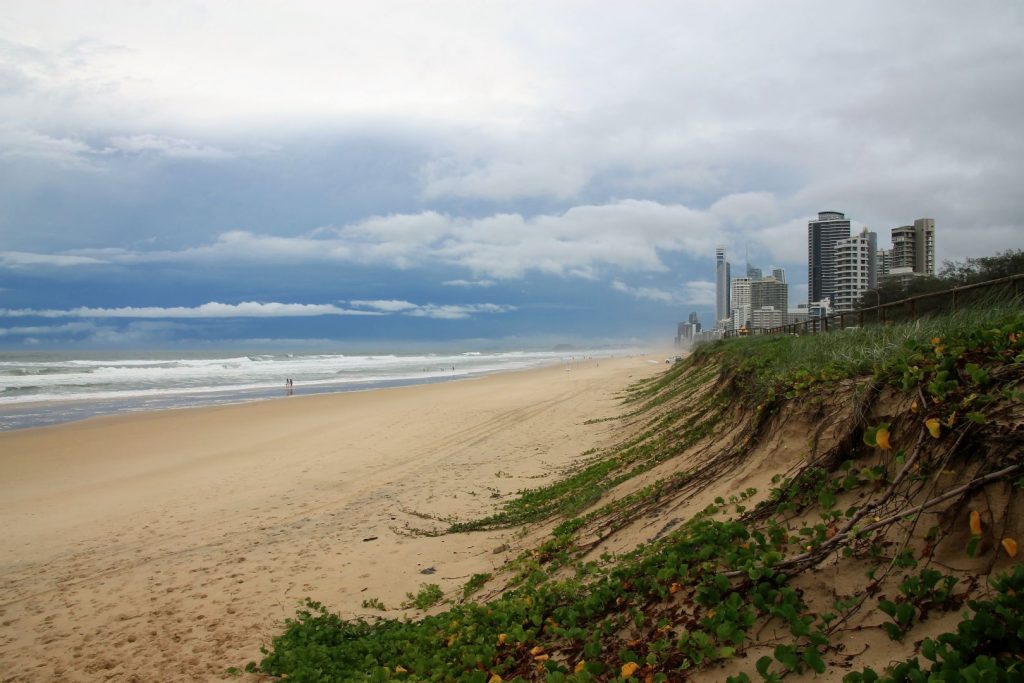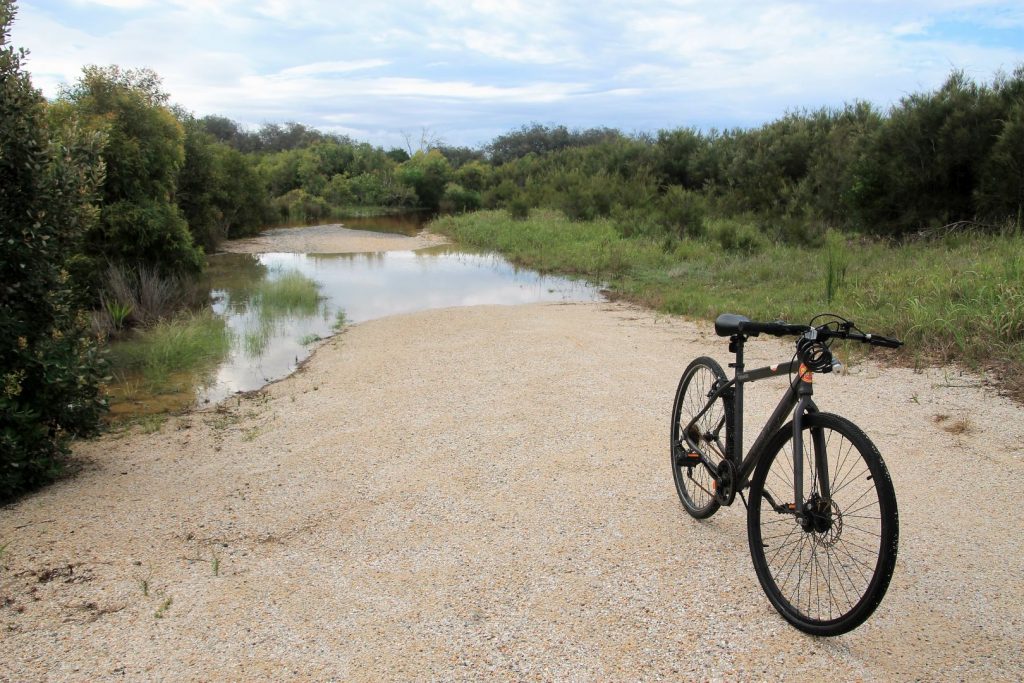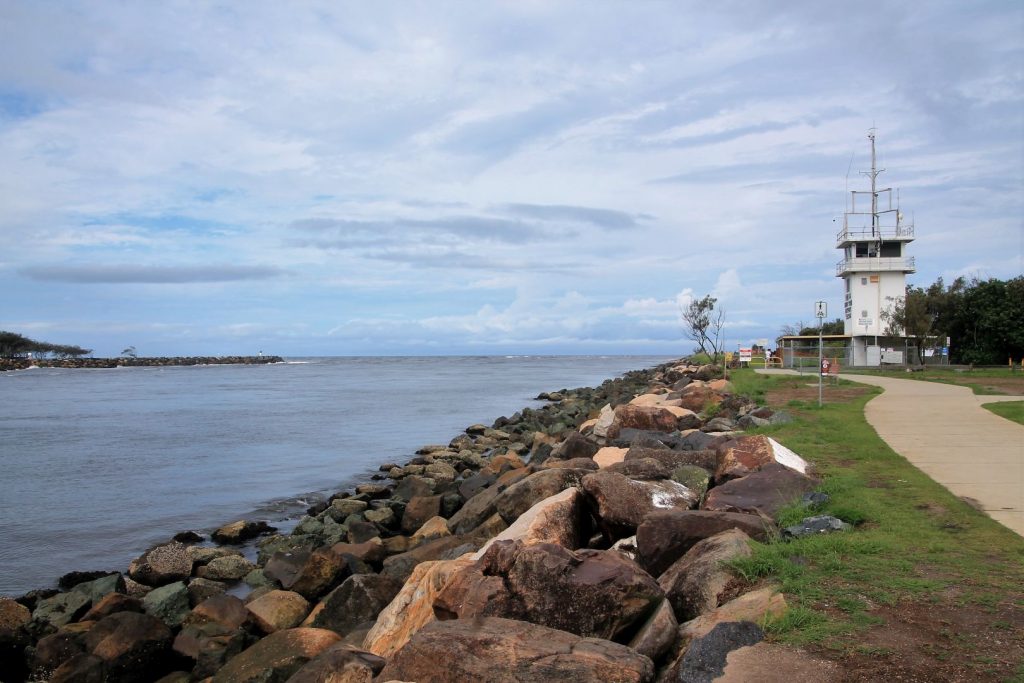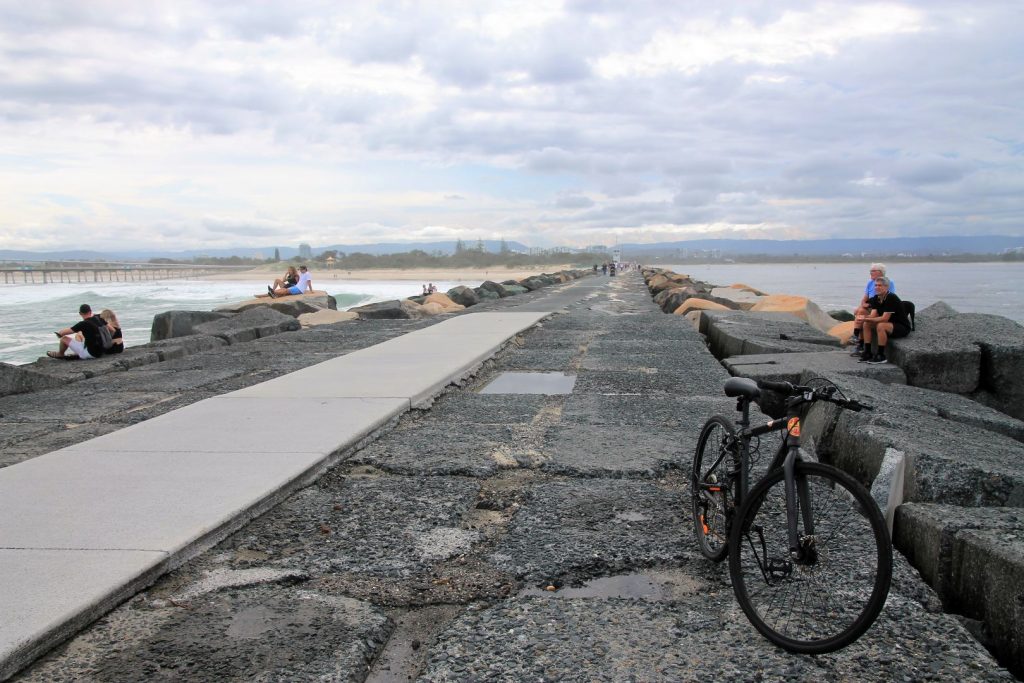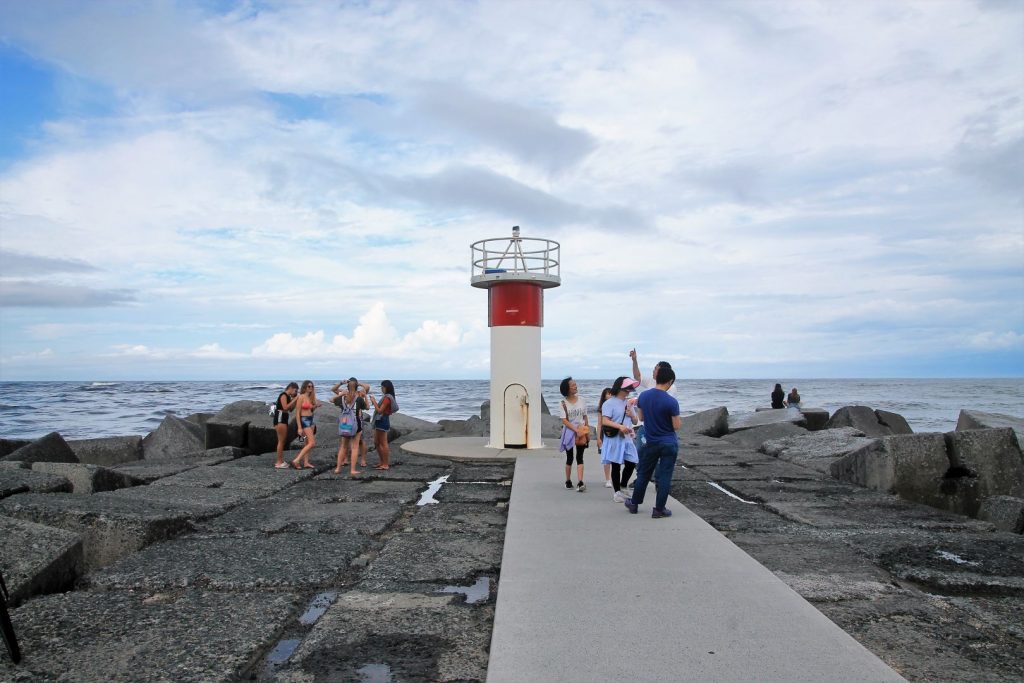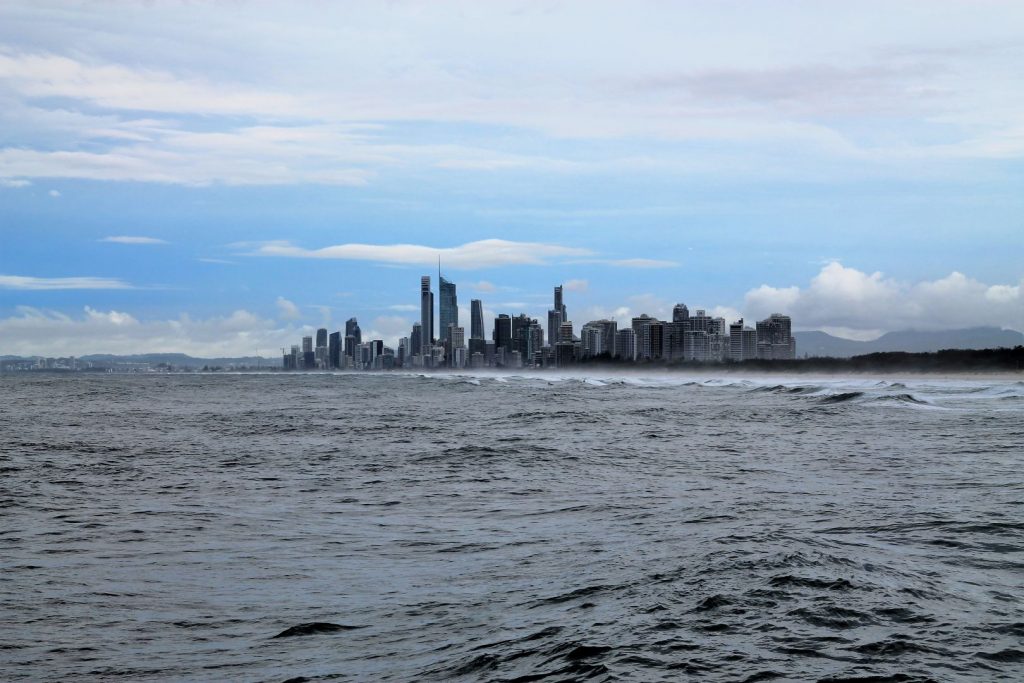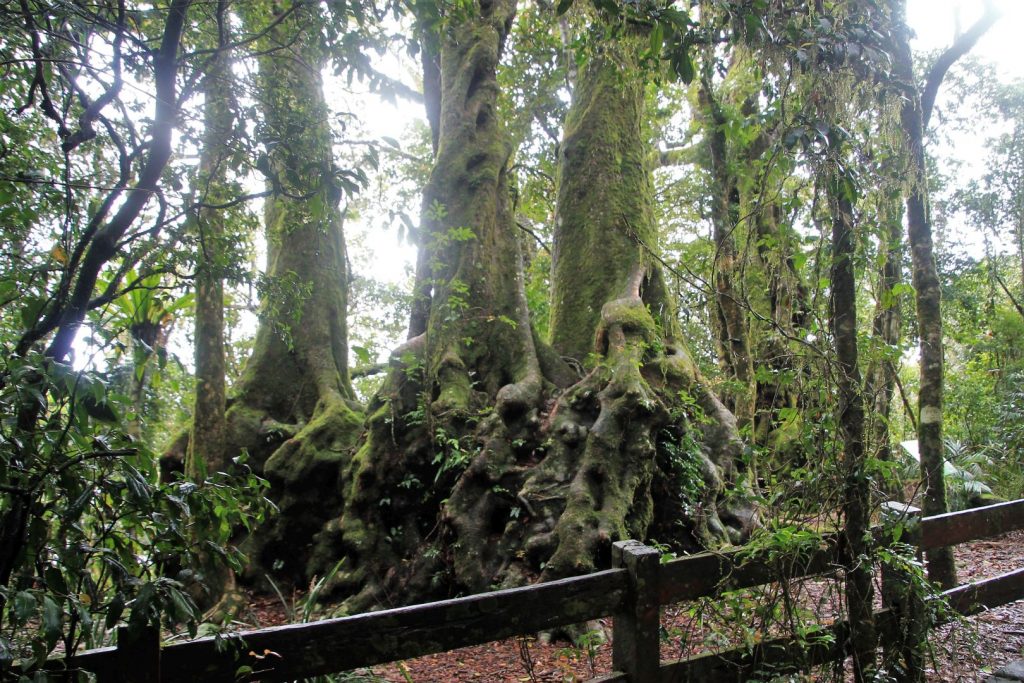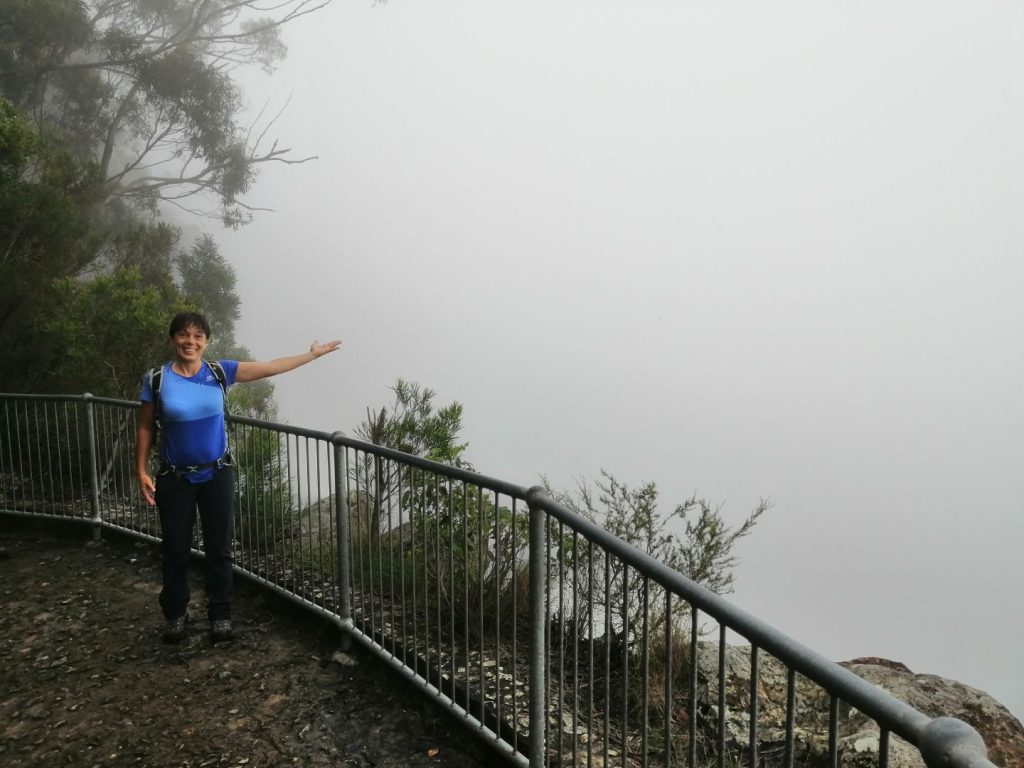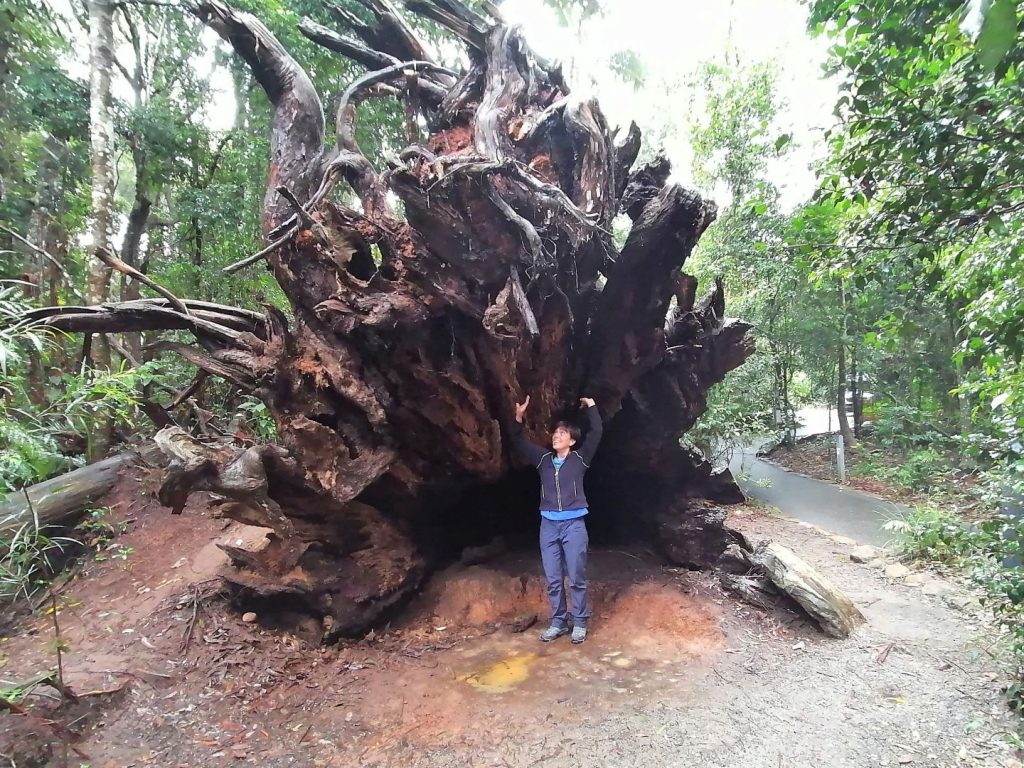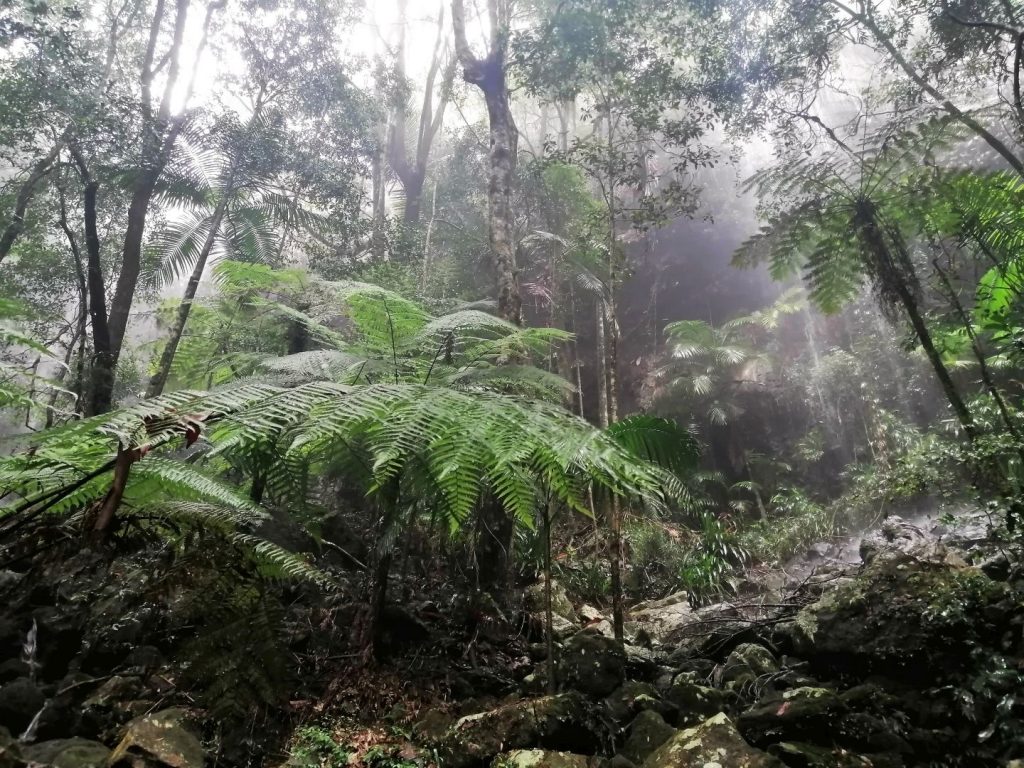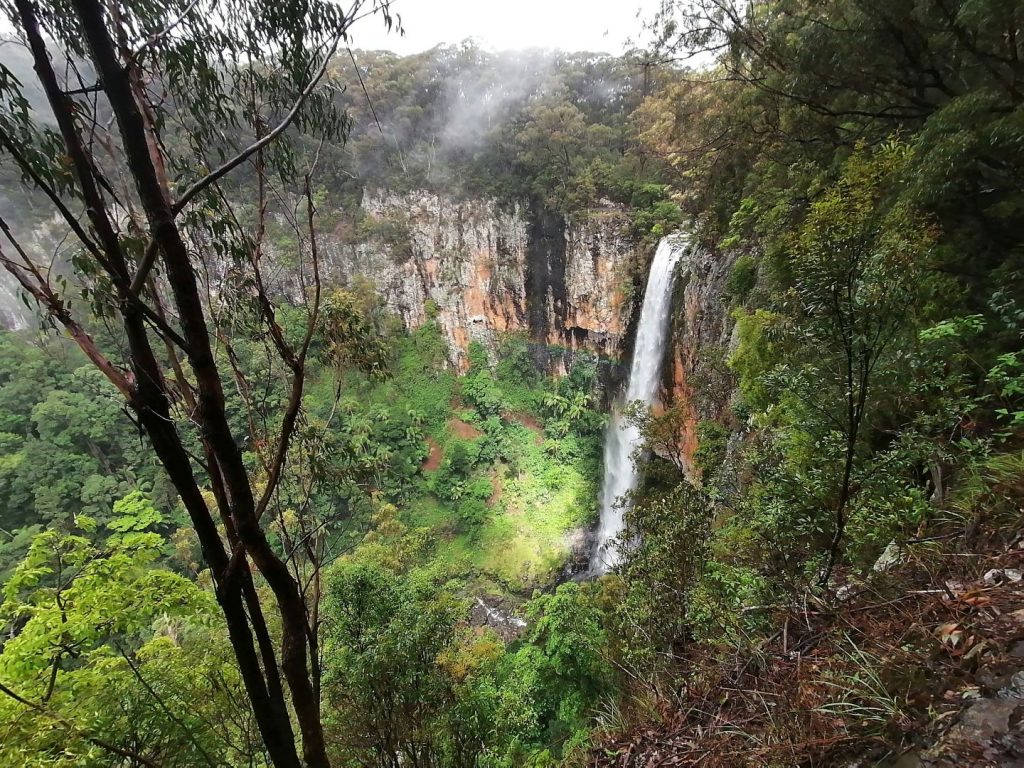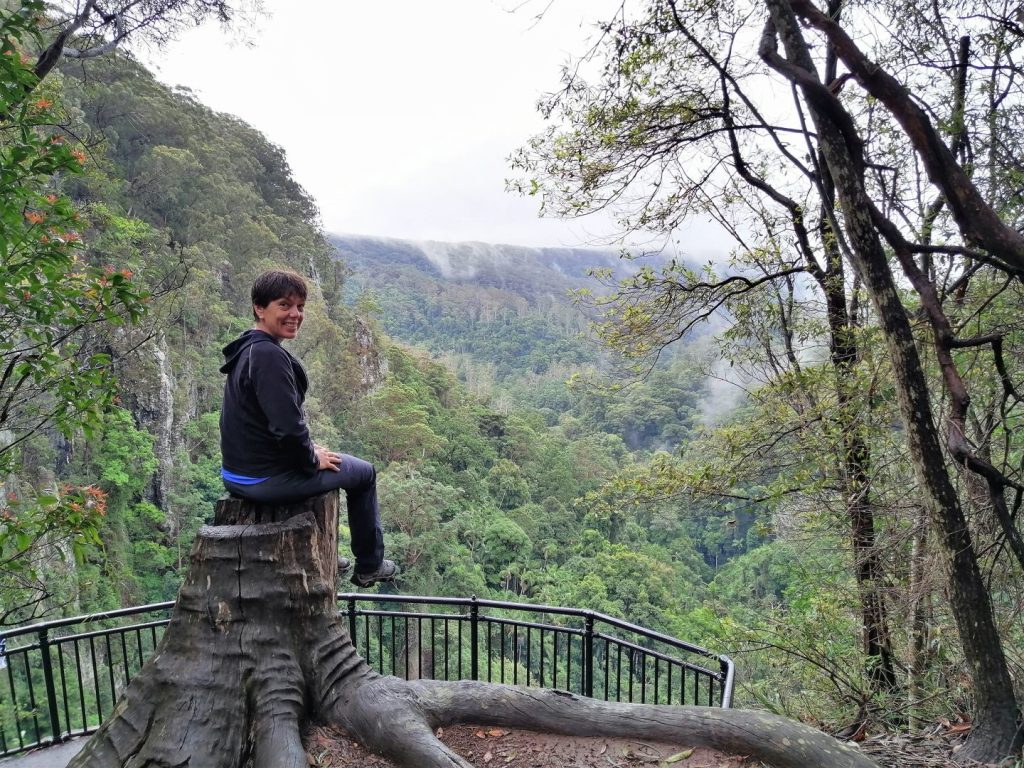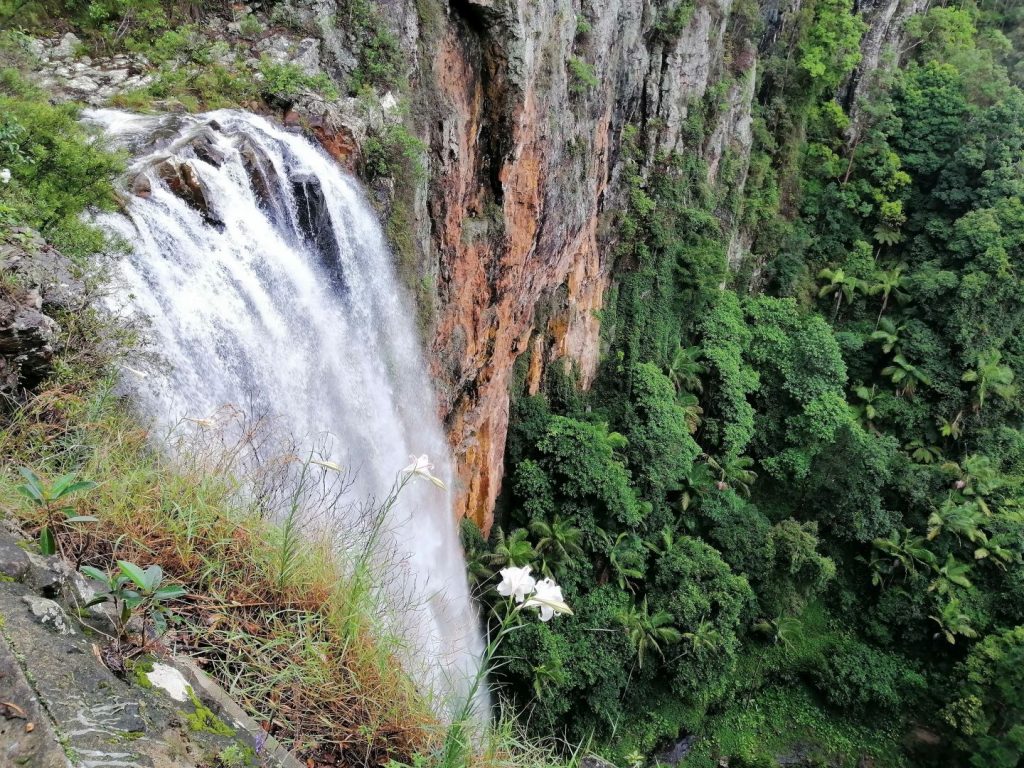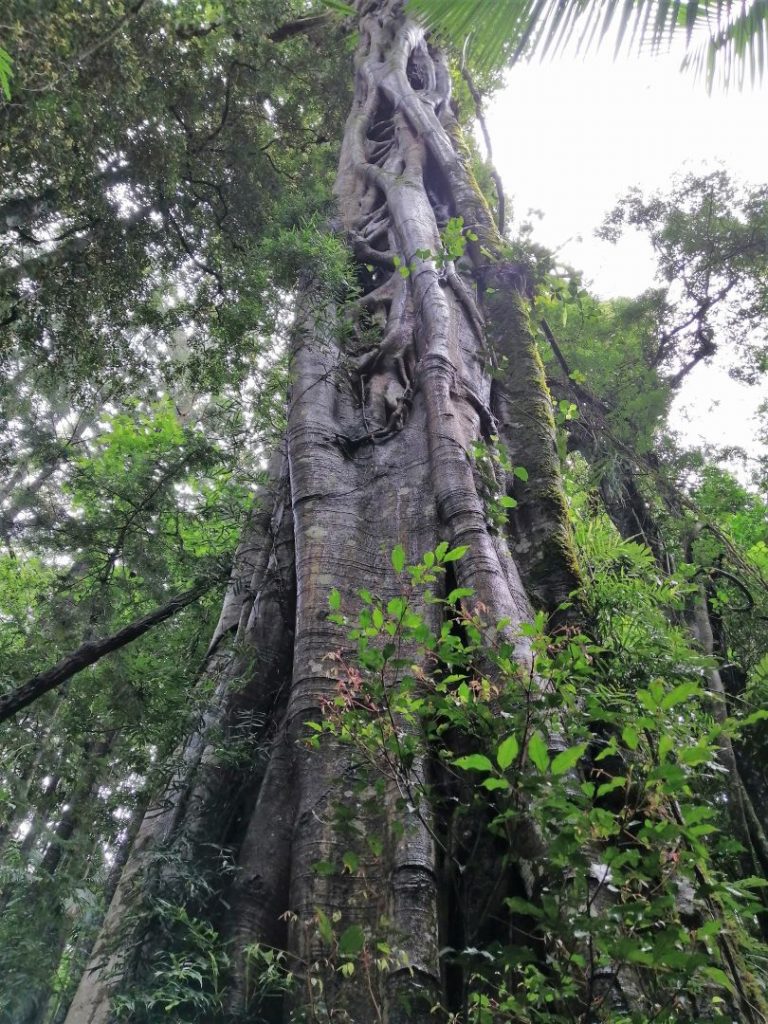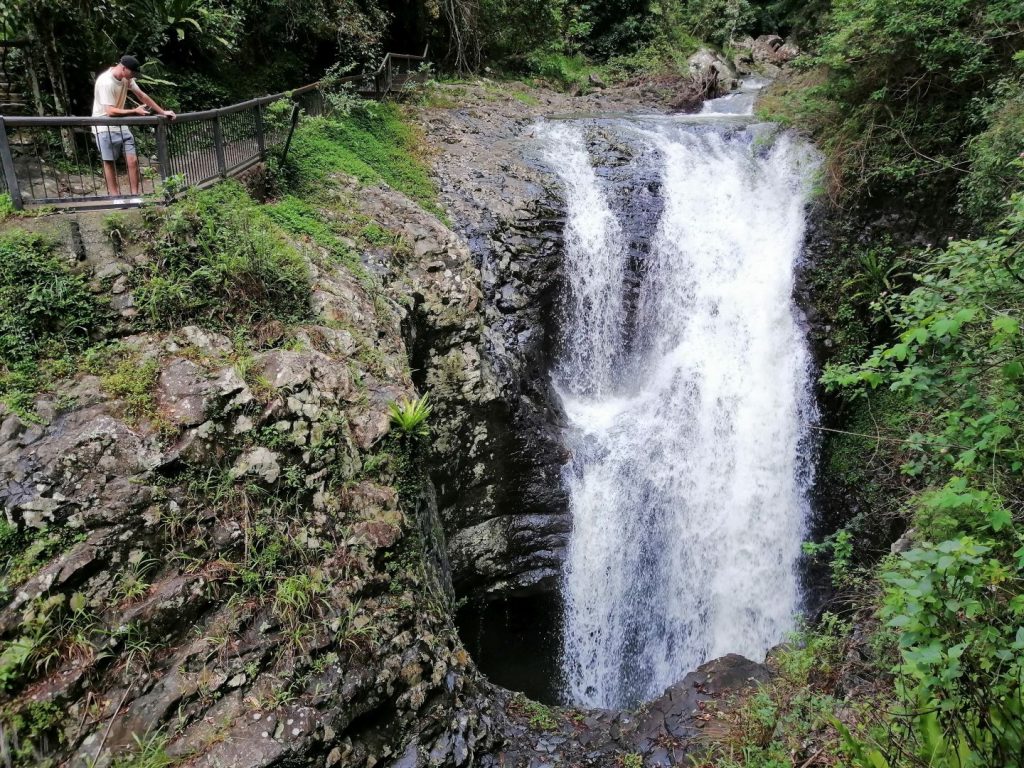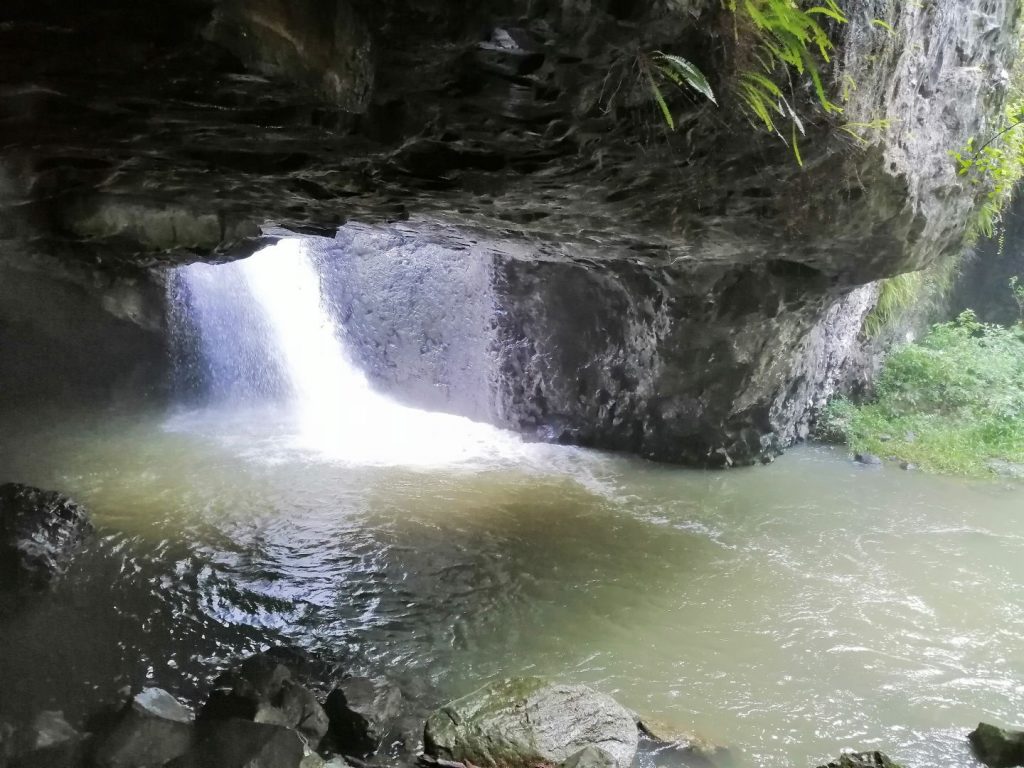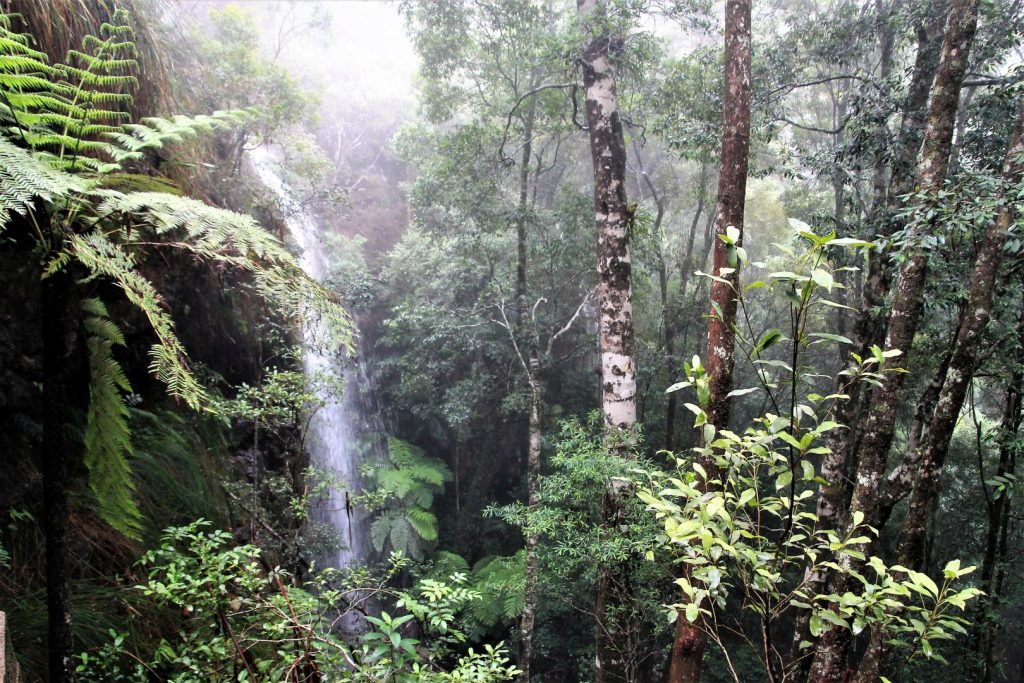Last updated on 20th March 2025
Surfers Paradise
The connection from Brisbane to the Gold Coast is very good and easy. There is a direct train every hour from Roma Street Station to Helensvale and from there goes the tram all along the coast. I had booked myself for three days into a motel in Surfers Paradise, curious about what that would be.
What I found was a very modern town with skyscrapers along an iconic broad beach of golden sand and wonderful surf. Only, it was raining. That rain had started when I left Airlie Beach and haunted me during my time in Brisbane and increased even more at the Gold Coast. Hence, far less tourists than normal were in Surfers Paradise, I guess. Shops made their revenue with umbrellas, and the restaurants, bars and clubs, usually vibrant and full of life, where on slow motion. The bustling beachfront boulevard, overlooking the surf and sand, looked like a film set for the movie “The Fog”, and all the adrenaline-fuelled adventures that the place offers in vast quantities had nearly come to a halt. No one was surfing, no one was diving, no one was paragliding, no one was skydiving, and only a few were rolling on some funny shaped three-wheelers through the wet-ish town. The evening market was happening but was wet and not well-visited. The preparations for the Sand Safari Arts Festival were ushered into tents to ensure that the sand for the artwork will not be washed away.
My orientation walk through the town centre was rather an orientation hop from shelter to shelter. The heart of Surfers Paradise is Cavill Ave. Life revolves around this area, and that is also where the famous but now cheerless Surfers Paradise Sign stands. I found it quite disturbing to see a small town with such modern, high and shiny skyscrapers built directly next to the beach. I am not quite sure if this arrangement underlines the natural beauty of this place, or rather destroys it. But having a very well developed infrastructure with frequent public transport along the beach is quite convenient and pleasant.
I was lucky to have an afternoon free of rain and so I rented a bike and cycled around. I went along the Esplanade north from Surfers Paradise Beach via Main Beach, along ocean way and federation walk, all the way up to The Spit. On this path, some of the original natural habitats of the area have been preserved and give an idea of how the entire area must have looked like before concrete and tar won over bush and sand.
The Spit separates the Gold Coast peninsula and Stradbroke Island. There is a long mole or pier, with a lighthouse at the end. From there it’s an amazing view at the skyline of Surfers Paradise in the distant south. I loved sitting there and just watch the oceans breathing, the big waves coming in, and boats battling with the swell, and the waves breaking with a steam of water in the air against the rocks of the mole. It was quite fascinating.
Springbrook National Park
The main reason to come to the Gold Coast for me was to visit Springbrook National Park. Despite the rain, I booked a day tour and one other tourist did the same. Big thanks to Rainforest Tours Australia to operate the tour with just the two of us. It was a rainy and misty day again. Yes, we got wet, but it turned out that after heavy rain is the very best time to visit Springbrook NP! We started with a scenic drive into the Springbrook National Park. And because we were very early, we were lucky to see some of the rare wallabies before other tourist cars would scare them off.
We started a hike that took us deep into the Gondwana Rainforest. We admired the majestic Antarctic Beech Trees which are supposed to be the present link to the ancient times of the Gondwana supercontinent on which those trees already flourished. We came across several lookouts but being a misty day we had a great view of nothing.
We followed the 4km Twin Falls circuit that took us to the Twin Falls and the Rainbow Falls and as well as the upper and the lower part of the Purling Brook Falls. As we have had several days of heavy rain, the falls had plenty of water and were in a full rush. Even the guide said he had never seen the falls like that, with so much water that he felt goosebumps about the sheer magic of this place. I must say I felt the same.
As we were walking through the forest, the thundering sound of the falls could be heard long before they were visible. And suddenly, turning around a corner we stood on the foot of a massive cliff over whose edge tons of water hammered down so powerfully that it took our breath away. It covered the whole place with water and humidity so that all green flourished. We could walk behind one of the falls which even emphasized the feeling of power and mercilessness of those massive falls. It is a truly magical experience. I felt that I should have taken more time to explore more of that wonderful rainforest.
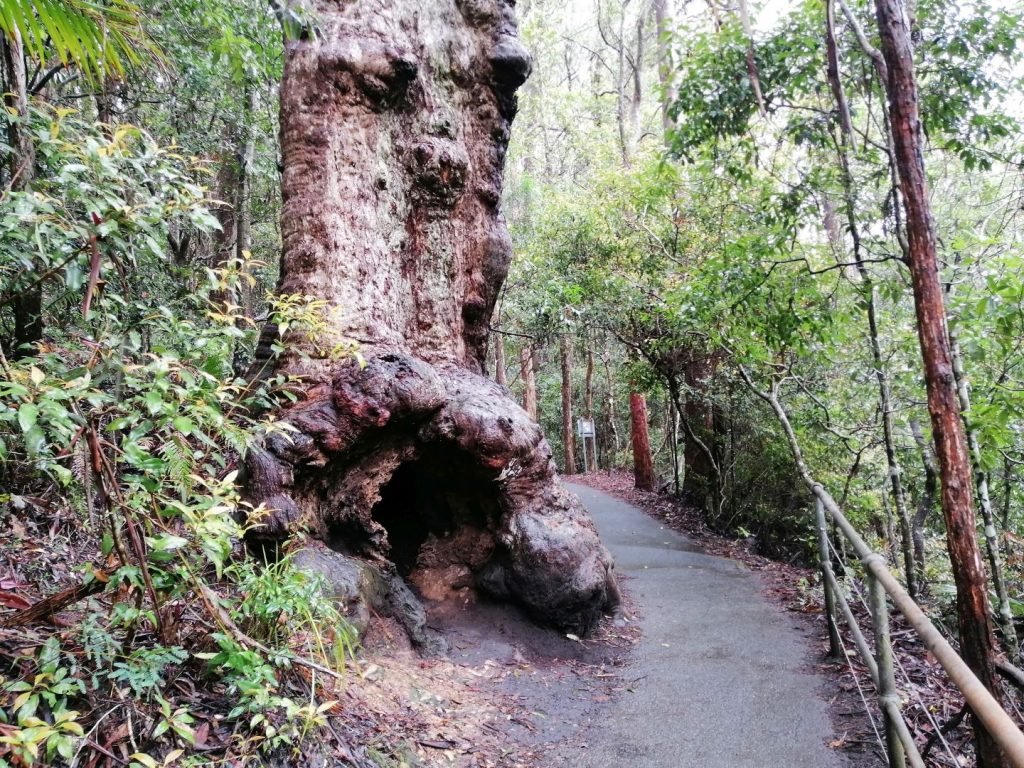
After an amazingly opulent picnic-lunch, we went to see the Natural Bridge which Springbrook National Park is famous for. The waters of a stream plunge into a massive hole in the granite rocks and then flows underneath a natural rock bridge to continue flowing as a river again. There are two lookouts, one at the top to see the water falling down into that hole, and one underneath the stone bridge where the waterfalls into a pool and then flows underneath that bridge. It is dark and wet there, I even found two glow-worms at the ceiling. This river carried loads of water too, and that gave a nice strong arc to the water falling into the hole. An absolutely picturesque scene.
Next to Springbrook National Park is Lamington National Park which was highly recommended by our guide. Hence, next time I will definitely include this one into my explorations as this park is even bigger and offers more wonders of nature and beauty.
My time in Australia was on its last leg as my three-month visa was running out. I wanted to spend my last few days at South West Rocks to do the dive at Fish Rock Cave. So I moved further south the next day to Byron Bay. I did not know yet that rain and stormy weather would continue and eventually hinder me to do the dive. Operators had to close their business due to the weather conditions and cancel all dives due to dangerous currents and zero visibility.

